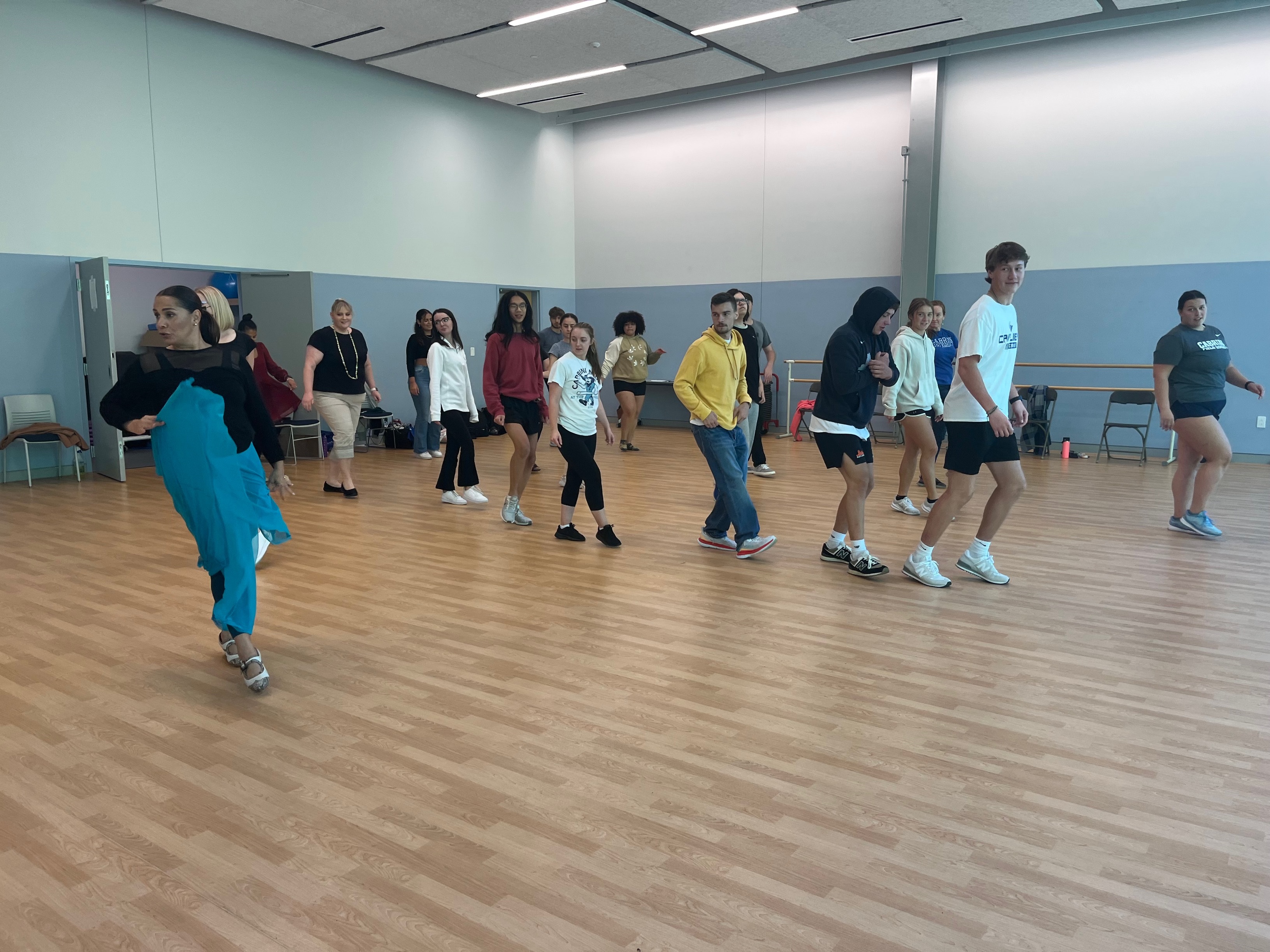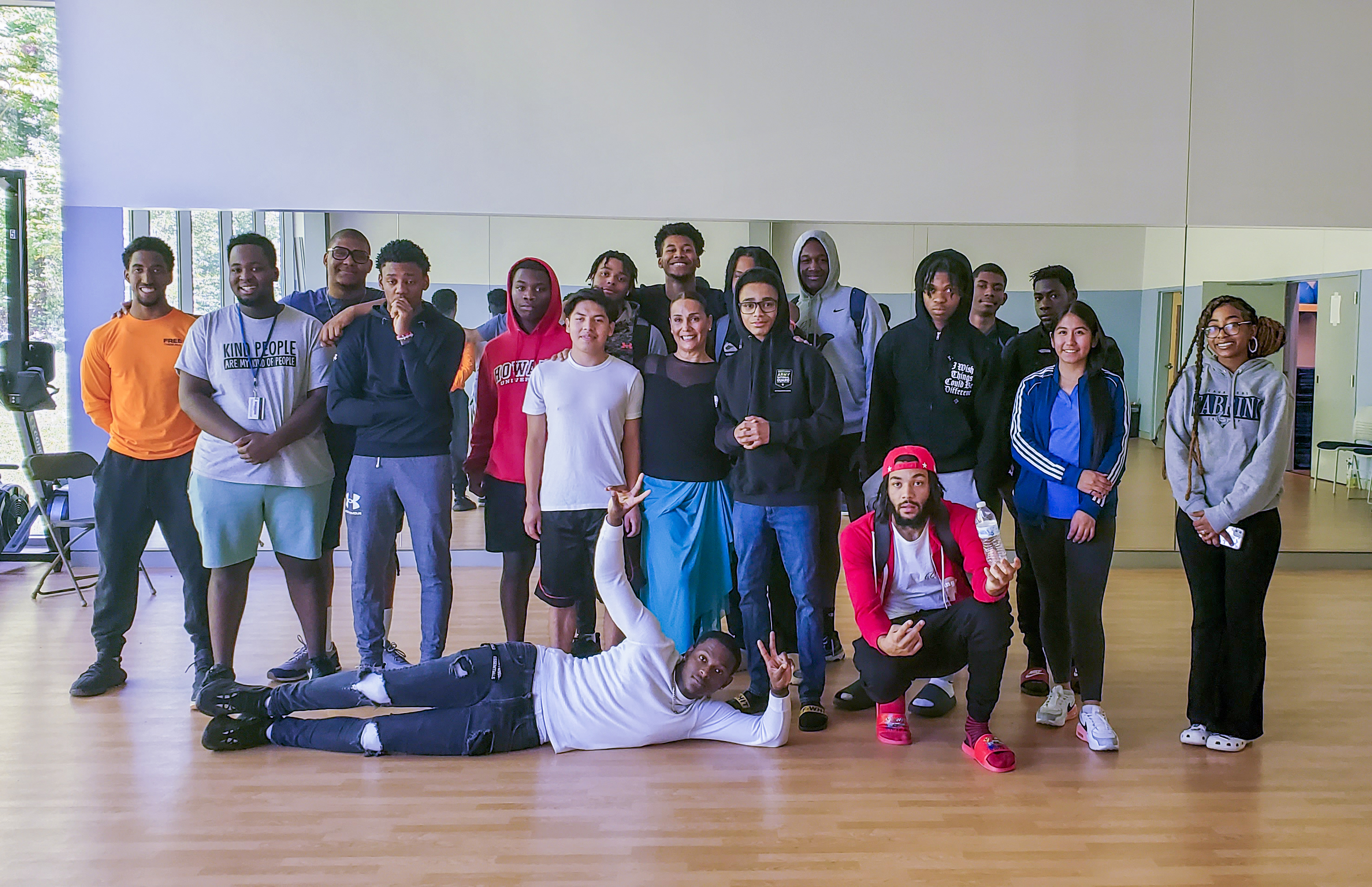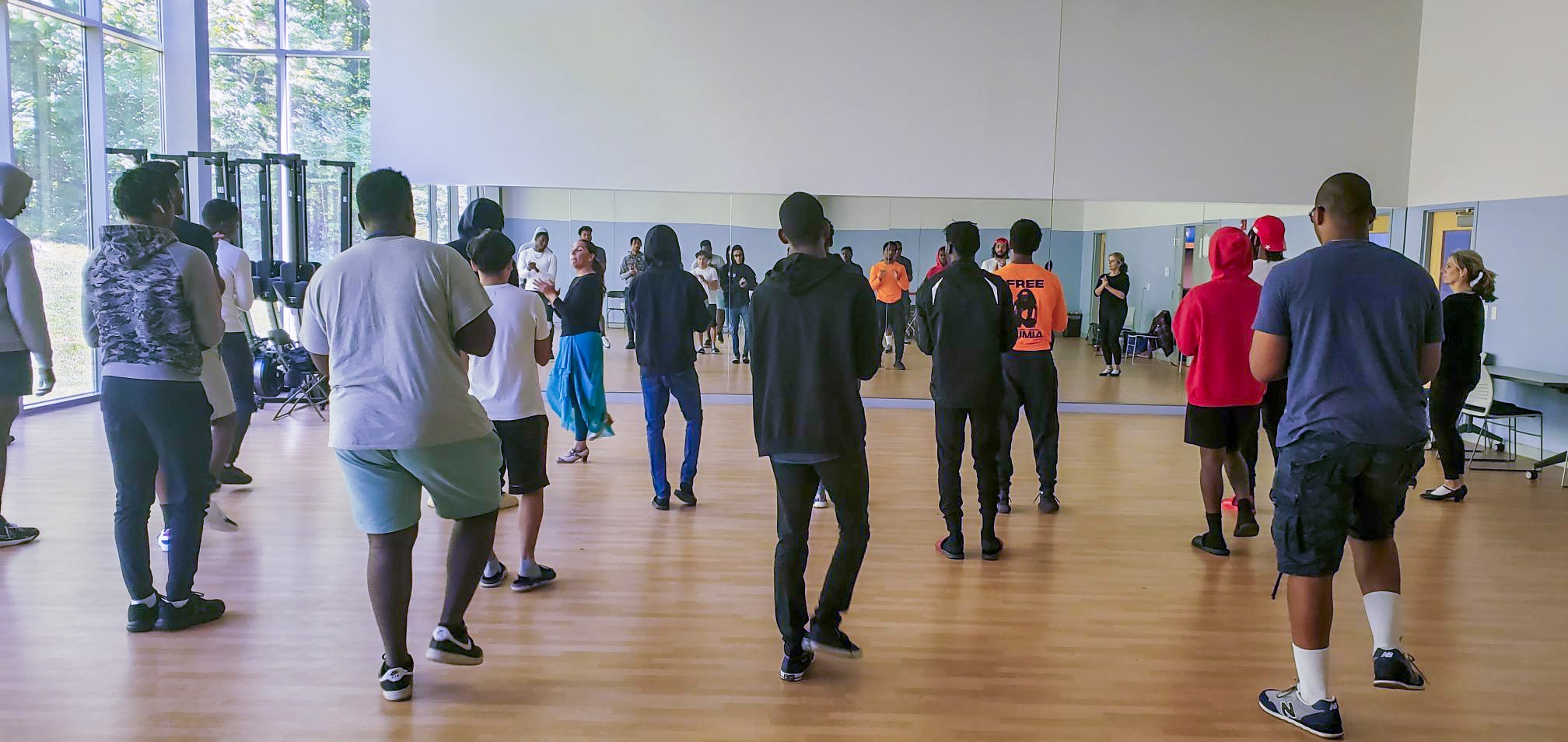 Students joined faculty and staff for Rumba Flamenco dancing lessons on Friday, September 23, as part of the Center for Global Learning’s Llamada “Call for Centering” series. The lessons, which were led by Elba Cena, a classical Spanish Flamenco teacher and performer with Philadelphia’s Pasion y Arte, were organized with the intention of creating a shared moment of direct cultural learning within the Cabrini community.
Students joined faculty and staff for Rumba Flamenco dancing lessons on Friday, September 23, as part of the Center for Global Learning’s Llamada “Call for Centering” series. The lessons, which were led by Elba Cena, a classical Spanish Flamenco teacher and performer with Philadelphia’s Pasion y Arte, were organized with the intention of creating a shared moment of direct cultural learning within the Cabrini community.
“You have to be right here in the moment feeling yourself, from your feet to your crown—so it’s direct experience,” said Nancy L. Watterson, PhD, Director, Center for Global Learning, and Professor, American Studies. “We’re really trying to emphasize global learning through local engagement.”
The classes were supported by a Department of Education Undergraduate International Studies and Foreign Language Program grant obtained by the Wolfington Center, and were presented in partnership with Cabrini’s Office of Diversity, Equity, Inclusion, and Belonging (ODEIB).
Before Cena began demonstrating the various steps and rhythms, Natacha Bolufer-Laurentie, PhD, Associate Professor, Spanish and Latin American Studies, traced the history of Rumba Flamenco’s multicultural evolution.
“Flamenco is a great stealer,” Bolufer-Laurentie said, referencing the music style’s Spanish, Cuban, and indigenous influences. “It takes from everybody and it becomes this hybrid fusion music and dance style.”
These transatlantic origins form the “Cantes de ida y vuelta,” a group of Flamenco music styles translated as “songs that travel back” or “roundtrip songs.”
As she began, Cena encouraged each dancer to release their fear of embarrassment and let the music guide the way.
“If you don’t feel it, there’s no dance—there’s just doing steps,” she said. “This class is about feeling. Having fun, and starting to feel a little bit of beat inside us.”
Though the various movements did not come naturally to most in attendance, there were as many ear-to-ear grins as clumsy steps during Cena’s demonstrations.
The historical introduction connected the study of Flamenco and its many cultural infusions with the celebration of Hispanic Heritage Month, which spans from September 15 (Independence Day for Costa Rica, El Salvador, Guatemala, Honduras and Nicaragua) to October 15. But internalizing cultural rhythms through the carefree nature of dance presents a more impactful opportunity for cultural learning, Watterson said.
“We thought this would be a great way to bring together…administrators, staff, faculty, and students to celebrate by learning together,” Watterson said. “Then we see the common humanity, not just our ethnicities, our nationalities, and languages. If we’re trying to learn together in one shared moment, some of those differences are gone at least for this time we have together.”

Cena, whose parents were also Flamenco performers and teachers in Mexico, has been dancing since she was four years old. She believes dance is the best way to learn not just culture, but also healthy personal skills that may have dulled during recent years of social isolation.
“Dance is not just for people who like dancing,” she said. “It gives you a lot of tools: to break barriers, to show yourself in public, to loosen up. It’s a therapy.”
